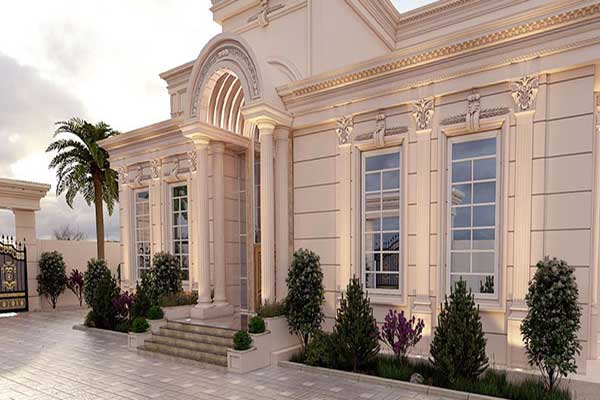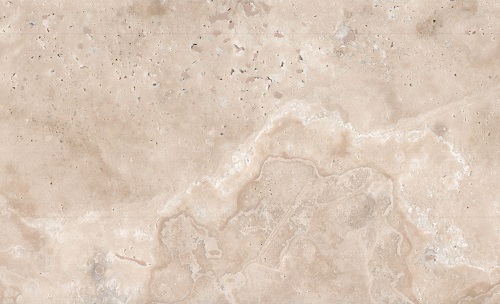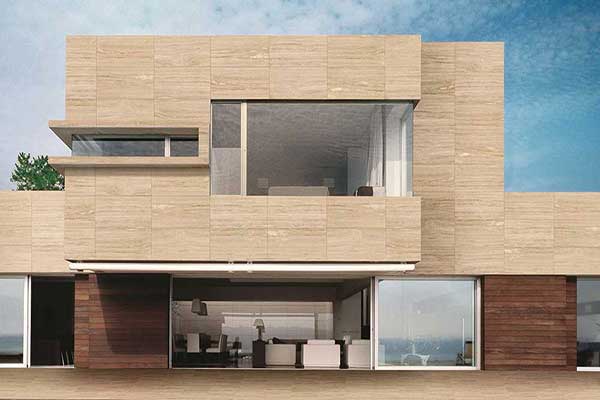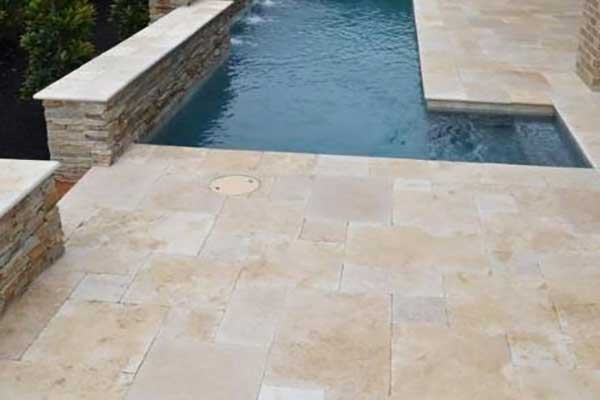- Tell : 09131114998
- Email : info@uranus-stone.com

Getting to know the uses of travertine stone
- 1401/07/14 ,
- stone industries Uranus
- 0 Comment
Get to know the uses of travertine stone
Travertine is a natural stone like marble , granite, onyx, limestone, slate, etc. The most important and main difference between travertine stone and other natural stones is how the stone is formed, the hardness of the stone and its appearance. Travertine is formed in hot springs and limestone caves.
The main characteristic of travertine stone is the appearance of holes inside the stone, which are caused by the escape of carbon dioxide. Therefore, travertine cannot be placed in the metamorphosis group like marble or limestone. It is interesting to note that travertine quarries are not similar to other natural stone quarries, but more like large pits.
After extraction, the pieces of travertine stone are transported to stone cutting factories and then processed into slabs, tiles, mosaics, etc. The use of travertine stone as a building material is very high, because it is the characteristics of travertine that make this stone. It is very useful and widely used.

Applications of travertine stone
Since time immemorial, builders and architects have been using travertine to create exquisite and precious architectural wonders due to its durability, longevity and lasting beauty. The use of travertine stone is very large and it can be used in the interior and exterior spaces of the building.
Due to its unique properties, travertine stone is used for building facades and interior walls. The presence of voids increases the adhesion of this stone for the facade of the building, and paying attention to its low density is effective in reducing the weight of the building. The variety in color has made this stone distinct and popular from this point of view.
Low water absorption and low longitudinal expansion coefficient, porosity and low density make the use of travertine stone more. Travertines are the product of old limestone springs, and among them, white travertines that have colored streaks and uniform porosity are of higher quality, and the use of white travertine stone is more.
Read more : All about travertine stone
Pale travertines are due to the presence of iron oxide pigments scattered in the stone texture, colored travertines that can be seen in red, walnut, lemon, etc. according to the percentage of iron oxide pigments and have roles that are caused by differences The amount of iron oxide in different layers of travertine is very beautiful and attractive.
The use of travertine stone is more in building stones due to its acceptable resistance, ideal cutability and polishability, beautiful appearance, and the presence of porosity to fully adhere to the mortar.
The use of travertine stone in Iran is abundant as a facade stone. According to the color, travertine is divided into: red, lemon, walnut, white and cream travertine. The application of travertine stone is to accept all kinds of processing on its surface. Maybe other stones have some properties in common with travertine, but definitely travertine is unique in these properties.
The use of travertine stone is mostly in external spaces, facades and grounds and even travertine stone artifacts. Of course, taking into account its technical issues. Travertine is the best option for tool works due to its special softness and integrity. Because it is obedient and calm in the hands of someone who wants to shape it.
Therefore, today most of the stone artifacts from tables and benches to stone statues are made of travertine.
Read more: How to calculate the price of travertine stone
Travertine stone is also used in the floor of outdoor spaces. Because its surface can be rough to prevent slipping. At the same time, it provides the necessary resistance for spaces that require high abrasion and bending resistance. Nowadays, the use of this stone in outdoor spaces is very common and appropriate.
This stone in the form of various colors and the property of slicing on the surface can help designers in open spaces. The use of travertine stone in the table is completely technical, economical and pioneering. Especially in parts like southern Iran, which is less exposed to dirty water.
In the following, you will get to know the most common uses of travertine stone:
stone face
Travertine is one of the most widely used stones for building facades. The beauty, long life and resistance of this stone to weather changes have made this stone one of the best options for facade stone.

Floor and wall covering
Travertine slabs are a very good choice for building the floor and walls of a building. Travertine stone can be used in kitchens, corridors and bathrooms and it can be used according to the type of decoration and desired space. If the travertine stone is sealed well, it has a lot of resistance in places such as the kitchen, which is highly trafficked and subject to wear and tear.
Also, using travertine stone for wall covering is an excellent and popular option for hotel lobbies or convention centers.
Pool flooring
Travertine pavers are an excellent choice for flooring home pools because they are non-slippery. Also, due to non-absorption of heat, the surface of the earth stays cool on hot days. Therefore, it is not difficult to walk barefoot on the surface of travertine paving stones.

Yard and patio
Paving the yard and patio with travertine stone creates a stunning and eye-catching atmosphere in the eyes of people and residents of the building. Many patterns and models can be used to make patio paving with travertine stone.
Driving directions
On roads made with asphalt and concrete, there is nothing exciting and the atmosphere is almost monotonous and boring. But the use of travertine paving stones creates a special charm and surprise for driving routes. Travertine stone has a very high resistance to abrasion, scratches, heat and heat.
Corridors and walkways
Travertine stones of desired dimensions can be used to make the entrance paths and leading to the garden more attractive. Using natural stone in the walking path of open areas can be a reminder of pristine and beautiful nature.
Stairs and walkways
Travertine tiles and paving stones create a very beautiful appearance inside or outside the building for making stairs and steps.
Bathroom cabin and water shower
Well-sealed travertine tiles are ideal for use in bathroom and shower enclosures. Because they have a natural beauty and water stains or foam from soap are not visible on them.
fireplace
Travertine stone can be used to make a very beautiful fireplace, which is the focal point of the living room. Compared to other materials, travertine is a popular option for fireplaces.
Application of travertine stone
For consultation and purchase of travertine stone, be in touch with Uranus Stone Quarry.
